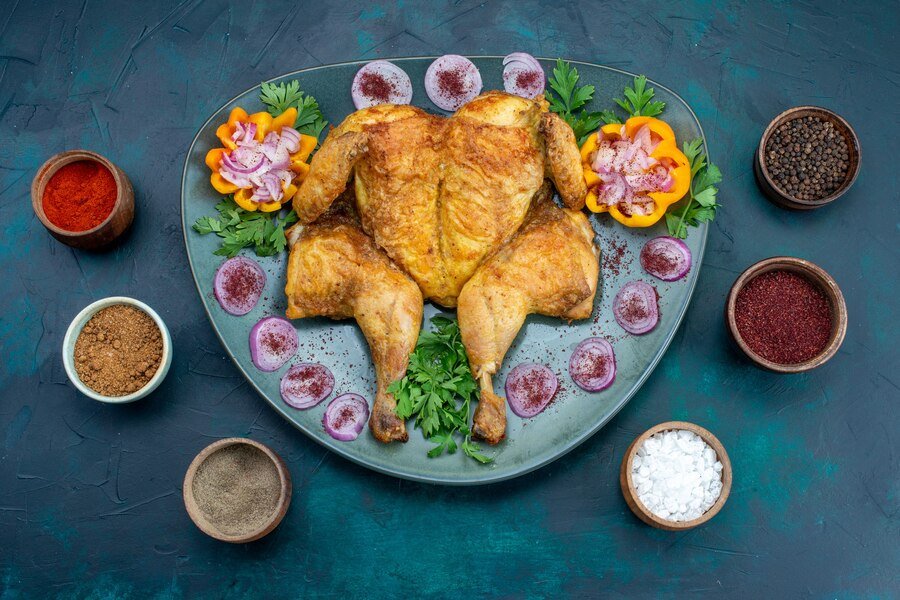Definition and Origin
Pollaste, an Estonian term for chicken dishes, has deep roots in the culinary traditions of both Estonia and India. This flavorful cuisine not only celebrates the versatility of chicken but also showcases a rich tapestry of cultural influences and cooking techniques. Let’s dive into the enchanting world of Polaste food, exploring its definition, origin, cultural significance, and more.
Cultural Significance
Pollaste dishes are more than just meals; they are integral to many cultural and festive traditions. In Estonia, polaste is often prepared for special occasions and family gatherings, symbolizing warmth and togetherness. The dishes highlight the importance of sharing meals and celebrating life’s milestones with loved ones. Similarly, in Indian culture, chicken dishes have a prominent place in festivals, weddings, and daily meals, reflecting a deep-seated tradition of culinary artistry.
Culinary Experience
Taste Buds and Fragrant Spices
Understanding Taste Buds
The magic of pollaste lies in its ability to tantalize the taste buds with a spectrum of flavors. From the first bite, you encounter an intricate play of savory, sweet, sour, and spicy notes that create a memorable dining experience.
Fragrant Spices in Pollaste Recipes
A defining characteristic of pollaste cuisine is its use of fragrant spices. These spices are carefully selected and blended to bring out the best in chicken, enhancing its natural flavors while adding depth and complexity to the dish.
Aromatic Spices Used in Cooking Pollaste
Some of the key spices used in polaste recipes include:
- Cumin: Adds a warm, earthy flavor.
- Coriander: Provides a bright, citrusy note.
- Turmeric: Offers a golden hue and slightly bitter taste.
- Garam Masala: A blend of ground spices that adds a rich, aromatic finish.
- Cloves: Impart a sweet and pungent taste.
Cooking Methods and Techniques
Traditional Cooking Methods
Traditional pollaste dishes are often slow-cooked to perfection, allowing the spices to penetrate deeply into the chicken. Methods such as braising and stewing are common, creating tender, flavorful meat that falls off the bone.
Modern Cooking Techniques for Pollaste
Modern techniques have introduced new ways to prepare polaste, making it more accessible and convenient without sacrificing flavor. Sous-vide cooking, for example, ensures that chicken remains juicy and tender, while modern grilling techniques add a delightful smoky char.
Tips for Cooking Tender and Juicy Chicken Pieces
- Marination: A good marinade, rich in yogurt, lemon juice, and spices, can work wonders in tenderizing chicken and infusing it with flavor.
- Temperature Control: Cooking chicken at a consistent and appropriate temperature ensures even cooking and prevents drying out.
- Resting Time: Allowing cooked chicken to rest before cutting helps retain its juices, making for juicier bites.
Culinary History of Pollaste
Evolution of Pollaste Dishes
Pollaste dishes have evolved over centuries, influenced by various cultural exchanges and culinary innovations. The integration of Indian spices and cooking methods into Estonian poultry dishes is a testament to this dynamic evolution.
Historical Significance in Estonian Cuisine
In Estonia, pollaste dishes have historically been a symbol of prosperity and festivity. They were often served during important feasts and celebrations, showcasing the host’s culinary skills and hospitality.
Influence on Indian Cuisine
The influence of Indian cuisine on polaste is profound. Indian spices and techniques have introduced bold flavors and vibrant colors to traditional Estonian chicken dishes, creating a unique fusion that continues to delight palates around the world.
Conclusion
The world of polaste food is a harmonious blend of tradition and innovation, where cultural heritage meets contemporary culinary practices. Whether you’re savoring a traditional Estonian chicken stew or a modern, spice-infused Indian-inspired dish, polaste offers an enriching and flavorful journey for your taste buds.
We hope this exploration has sparked your interest in the fascinating world of polaste food. For those eager to dive deeper into this culinary adventure, experimenting with the diverse spices and cooking techniques mentioned here can be a great start.
FAQ – Exploring Pollaste Food
1. What is Pollaste?
- Polaste refers to Estonian chicken dishes, blending cultural influences and cooking techniques.
2. Why are Pollaste dishes significant?
- They symbolize warmth and togetherness in Estonian culture, often served for special occasions. In India, chicken dishes hold a prominent place in festivals and daily meals.
3. What defines the taste of Pollaste cuisine?
- It offers a mix of savory, sweet, sour, and spicy flavors, enhanced by fragrant spices like cumin, coriander, and turmeric.
4. What are common cooking methods for Pollaste?
- Traditional methods include slow-cooking through braising and stewing, while modern techniques like sous-vide and grilling are also popular.
5. How has Indian cuisine influenced Pollaste?
- Indian spices and techniques have introduced bold flavors and colors, creating a unique fusion.
Read also: How Professional Gym Cleaning Services Can Boost Your Business
